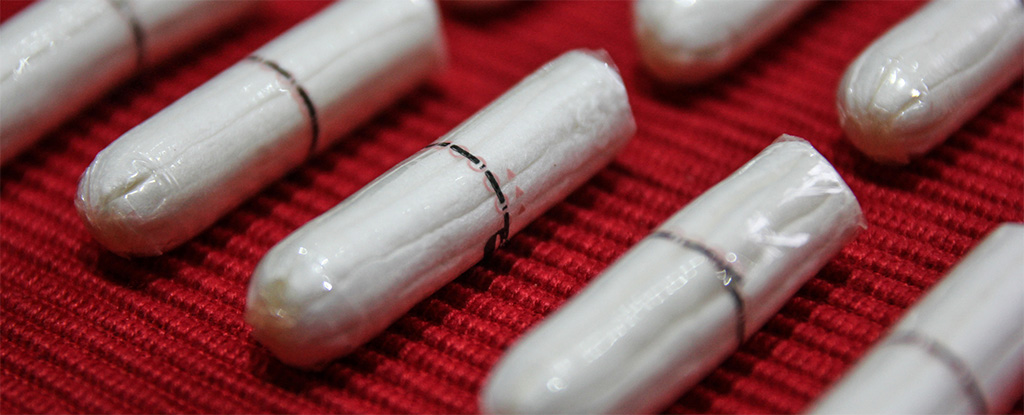Weighing up the pros and cons of different sanitary products requires sound knowledge of what risks and benefits each poses. For the first time, researchers have measured concentrations of various metals in tampons, finding worrying levels of several toxic types, including lead, for which there is no safe level of exposure.
The walls of the human vagina are lined with a highly absorptive tissue that has the potential to soak up stray pollutants – like metals – that would circulate in the bloodstream without being filtered by the liver first.
So anything that’s going in there needs to be carefully considered, including sanitary items like tampons. Up to 86 percent of menstruating folks in the US use tampons to absorb their menstrual blood.
“Despite this large potential for public health concern, very little research has been done to measure chemicals in tampons. To our knowledge, this is the first paper to measure metals in tampons,” says Jenni Shearston, an environmental epidemiologist at Columbia University in the US.
“Concerningly, we found concentrations of all metals we tested for, including toxic metals like arsenic and lead.”
The research team used mass spectrometry to assess concentrations of 16 different metals in 30 tampons from 14 tampon brands, across 18 product lines. Manufacturers, brands, and product lines aren’t explicitly named in the study, though products were claimed to have been purchased from the UK, US, and Europe.
The team found measurable concentrations of all the metals assessed: arsenic, barium, calcium, cadmium, cobalt, chromium, copper, iron, manganese, mercury, nickel, lead, selenium, strontium, vanadium, and zinc.
Most alarming were the presence of lead, with an average concentration of 120 nanograms per gram of tampon; cadmium, at 6.74 nanograms per gram; and arsenic, 2.56 nanograms per gram.
Lead concentrations were higher in non-organic tampons, but organic tampons had higher levels of arsenic.
Regardless of the tampons’ origin, brand, or whether they were organic, none of those tested stood out as having consistently lower levels of metals overall.
All of these metals were likely introduced into the product through agricultural and manufacturing processes – for instance, plants used to produce the cotton, rayon, or viscose used in the tampons’ absorbent cores may take up metals from pesticides, fertilizers, and wastewater in the soil. Alternatively, the fibres may pick up chemicals from pigments or antibacterial agents later in the manufacturing process.
But while some naturally present metals are expected and accepted, these results suggest tampons may increase personal exposure to potentially unsafe levels of metal.
“Although toxic metals are ubiquitous and we are exposed to low levels at any given time, our study clearly shows that metals are also present in menstrual products, and that women might be at higher risk for exposure using these products,” says isotope geochemist Kathrin Schilling, also from Columbia University.
The researchers note that there’s a lack of data on the absorption of chemicals through the vagina walls in general, so it’s unclear whether these metals could leach out of tampons and into the tissue lining, and further research will also be needed to determine whether this has any adverse health effects.
But it does call into question whether safety standards for sanitary products are in need of a revision – the researchers think so.
“I really hope that manufacturers are required to test their products for metals, especially for toxic metals,” Shearston says.
“It would be exciting to see the public call for this, or to ask for better labeling on tampons and other menstrual products.”
This research was published in Environmental International.




















Discussion about this post